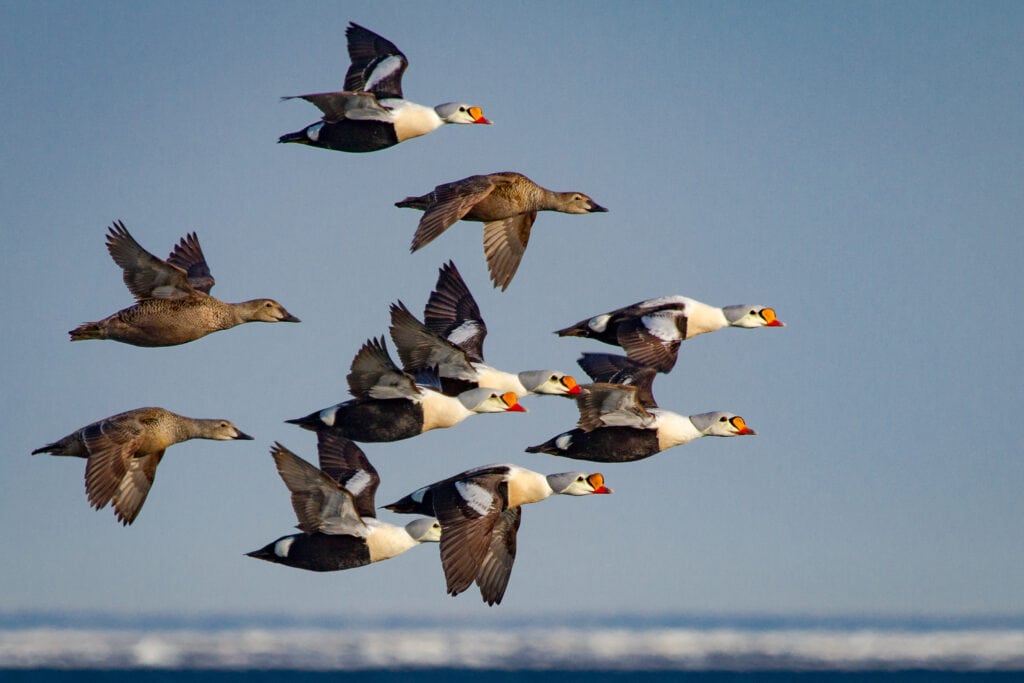You’re probably familiar with Mallards. You might even know your way around a Teal or a Scaup, but have you heard of the King Eider? Even compared with the vast and diverse duck family, the King Eider stands out as uniquely fascinating and majestic. This large sea duck is found in the frigid regions of the Northern Hemisphere and can easily be recognized by its flashy orange and red bills, blue and green face, and stark black body.
If you are familiar with Eiders, then it is probably through their most famous feature: eiderdown. Eiderdown is down feathers collected from the nests of Common Eiders, the King Eider’s close relative. It is a coveted luxury material because it is incredibly soft and thanks to a microscopic curling structure, it retains warmth very well. Historically, eiderdown was used by Vikings and was even accepted as a form of medieval currency. To this day, eiderdown is collected by farmers who build nests to attract mother Common Eiders and wait for them to hatch their eggs and leave the nests full of down feathers behind.
Related Article: Why Do Songbirds Sing So Much? A New Study Has the Answer
Fun Facts About the King Eider
The famous eiderdown may come from the Common Eider, but King Eiders have plenty of interesting features to study. Let’s look into some King Eider fun facts to learn more about what makes these birds so special!
Fearless mothers: Though King Eiders are not the typical source for eiderdown, their nests are still lined with luxuriously soft down feathers. King Eider mothers incubate their eggs with a self-sacrificing level of devotion. When a threat approaches the nest, rather than startle and flee, mother King Eiders will typically lay flat over the nest and protect it at great risk to their own life and limb. Though she may be flushed off of the nest depending on the threat, it isn’t unheard of for mother King Eiders to stay put even when touched or picked up. She will even refuse to leave the nest to eat for several days at a time.
Fly by night: King Eiders are champion migrators. They will migrate in daylight or under complete darkness and are undeterred by challenging weather conditions like fog. They can reach speeds of up to 40 miles per hour without tailwinds and have been recorded migrating over land and through high elevation mountains. Talk about determination!
Precocious babies: Mother King Eiders are extremely attentive to their nests during incubation, but once the babies hatch they are surprisingly independent. They head for water quickly and, though their mothers continue to look after them, King Eider chicks become responsible for finding their own food almost immediately. They join up with other freshly hatched King Eider chicks to form nursery groups called “creches” where several adults will oversee a mix of their own young and others.’
The Future of the King Eider
The Red List of Threatened Species published by the International Union For the Conservation of Nature (IUCN) lists the King Eider as being of “Least Concern” from a global conservation standpoint. Nevertheless, King Eider populations are decreasing. Changes in sea levels, global temperatures, and habitat availability are all potential contributors to this decline. Fortunately, in spite of this decline, their overall numbers are relatively stable for the time being.
Popular Article: Species Spotlight: The Fork-tailed Drongo

